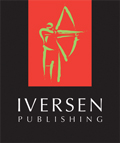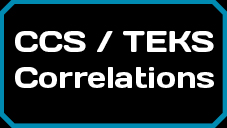|

LEVELS GRID
|
Level
|
Reading
Age
|
Grade
|
Color
Wheel
|
Reading
Recovery
|
Fountas & Pinnell
|
DRA
|
Broadband
|
Book
Band
|
Fluency
|
|
1
|
4-5
|
Kindergarten
Grade 0
|
Magenta
|
1
|
A
|
A - 1
|
A
|
1
|
Early
Emergent
|
|
2
|
4-5
|
Kindergarten
Grade 0
|
Magenta
|
2
|
B
|
2
|
A
|
1
|
Early
Emergent
|
|
3
|
4-5
|
Kindergarten
Grade 0
|
Red
|
3
|
C
|
4
|
B
|
2
|
Emergent
|
|
4
|
4-5
|
Kindergarten
Grade 0
|
Red
|
4
|
C
|
4
|
B
|
2
|
Emergent
|
|
5
|
5
|
Kindergarten
Grade 0
|
Red
|
5
|
D
|
6
|
B
|
2
|
Early
|
|
6
|
5
|
Kindergarten
Grade 1
|
Yellow
|
6
|
D
|
6
|
C
|
3
|
Early
|
|
7
|
5
|
Kindergarten
Grade 1
|
Yellow
|
7
|
E
|
8
|
C
|
3
|
Early
|
|
8
|
6
|
Grade 1
|
Yellow
|
8
|
E
|
8
|
C
|
3
|
Early
|
|
9
|
6
|
Grade 1
|
Blue
|
9
|
F
|
10
|
D
|
4
|
Early
|
|
10
|
6
|
Grade 1
|
Blue
|
10
|
F
|
10
|
D
|
4
|
Early
|
|
11
|
6
|
Grade 1
|
Blue
|
11
|
G
|
12
|
D
|
4
|
Early
|
|
12
|
6
|
Grade 1
|
Green
|
12
|
G
|
12
|
E
|
5
|
Early
|
|
13
|
6
|
Grade 1
|
Green
|
13
|
H
|
14
|
E
|
5
|
Early
|
|
14
|
6
|
Grade 1
|
Green
|
14
|
H
|
14
|
E
|
5
|
Early
|
|
15
|
6
|
Grade 1
|
Orange
|
15
|
I
|
16
|
F
|
6
|
Fluent
|
|
16
|
7
|
Grade 1/2
|
Orange
|
16
|
I
|
18
|
F
|
6
|
Fluent
|
|
17
|
7
|
Grade 1/2
|
Turquoise
|
17
|
I
|
18
|
F
|
7
|
Fluent
|
|
18
|
7
|
Grade 2
|
Turquoise
|
18
|
J
|
20
|
G
|
7
|
Fluent
|
|
19/20
|
8
|
Grade 2
|
Purple
|
19/20
|
J/K
|
20
|
G
|
8
|
Fluent
|
|
21/22
|
8
|
Grade 2
|
Gold
|
|
K/L
|
20/28
|
H
|
9
|
Fluent
|
|
23/24
|
8
|
Grade 2/3
|
Silver
|
|
L/M
|
28
|
H/I
|
10
|
Fluent
|
|
25/26
|
9/10
|
-
|
Maroon
|
|
-
|
-
|
-
|
-
|
Fluent
|
|
27/28
|
9/10
|
-
|
Brown
|
|
-
|
-
|
-
|
-
|
Fluent
|
|
29/30
|
9/10
|
-
|
Navy
|
|
-
|
-
|
-
|
-
|
Fluent
|
Publishers use many different ways to level their books. Many use computer-generated formulas. Others use a particular set of criteria such as total number of words, number of sentences per page, number of words per sentence, number of syllables per
word. Some benchmark their books against an existing program. Others analyze existing books and extrapolate salient features to group such books together and assign levels.
When writing and leveling books, Iversen Publishing takes into account many aspects of the reading process and the skills and strategies required by developing readers.
These include:
-
alphabetic and phonemic skills and strategies
-
comprehension skills and strategies
-
fluency skills
-
vocabulary and concept loading
-
introduction of high-frequency words
-
language structure in the text
-
length of the text and the sentences within the text
-
photo and illustrative support
-
inclusion of charts, maps and diagrams to foster understanding
However, no method of leveling is infallible because there is no blueprint to assigning any book to any level. This is particularly evident among computer-generated programs. If you run the same passage of text through two different computer programs, they will more than likely throw
up different readability levels. Likewise, if you give the same book to a group of teachers to level, the results can be very diverse. In effect, levels can never be more than a guide and can never replace a teachers knowledge of what students can do and what
they need to learn to do next.
The chart above is a compilation of the most popular leveling systems currently used.
|







